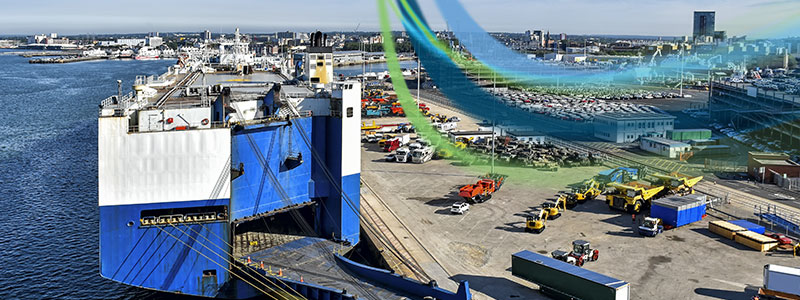
Relaxed Brexit Border Infrastructure Welcome but Not Enough Warns British Ports Association
On 24 September a new development order was applied, in named areas of England, relating to the requirement to check and process vehicles on entry into the United Kingdom as well as facilities for drivers and border staff. The order gives specific government border departments such as HM Revenue and Customs (HMRC) and the Department for Transport (DfT) the ability to apply to the Secretary of State to add infrastructure to its ports which will prove beneficial once the UK break away from the Single Market and Customs Union.
Approval by the British Ports Association
This order has been welcomed by the logistics industry, including the British Ports Association (BPA); however, they warn that there is still more to be done before the transition deadline. Richard Ballantyne, chief executive of the BPA said, “The legislation introduced to bypass the planning processes for border infrastructure in England is certainly a welcome move; however, there is still a lot be done to get ready for 2021. At various stages next year, new customs and border control processes will be introduced on European trade and our ports are working with the government to look at what needs to be done.”
He added that he hopes for a swift roll out of the government’s infrastructure plans, in-order that the UK’s gateway to Europe be ready.
The preparations have begun to create a physical and digital infrastructure to facilitate customs and other border procedures during transit between the UK, Europe and Northern Ireland. This could include new inspections facilities and computer systems to manage border controls that have emerged, following Britain’s exit from the Single Market and Customs Union.
Ballantyne said, “the sensible and measured implementation of the new border requirements could be essential for all parts of the freight and logistics industry.”
This order comes after a concerted effort by the Road Haulage Association and key figures from the logistics industry urged the government for a meeting over Brexit amid concerns over the slow progress that was being made.
The BPA represents 86% of port traffic in the UK, which includes major gateways such as Birkenhead, Dover, New Haven, Pembroke and Tyne. These facilities support the transport of thousands of trucks and trailers on a daily basis between Europe and the UK. This part of the industry could have the biggest impact on the new processes that are included in the new order.
Drawbacks to the New Order Identified
Following on from this, planning law expert of Pinsent Masons commented that the powers granted by the new regulations were limited to smaller developments which would not require environmental impact assessment (EIA). He explained that the development would not be able to approve new motorways or express roads over one hectare nor motorway services over 0.5 hectares unless it is proved that they will not have an untoward impact on the environment. He surmised that, “realistically…. The new order will apply to more modest changes in and around the ports.”
“Proposals must be put forward by a relevant border department – for example, HMRC – with the site owner, such as the harbour authority, only engaged on the application. Presumably, in practice, it is likely that the border department will have discussed things at length with port operators, as it is difficult to see how the border department will be best placed to lead on the necessary infrastructure to process port traffic efficiently through the port and surrounding areas.”